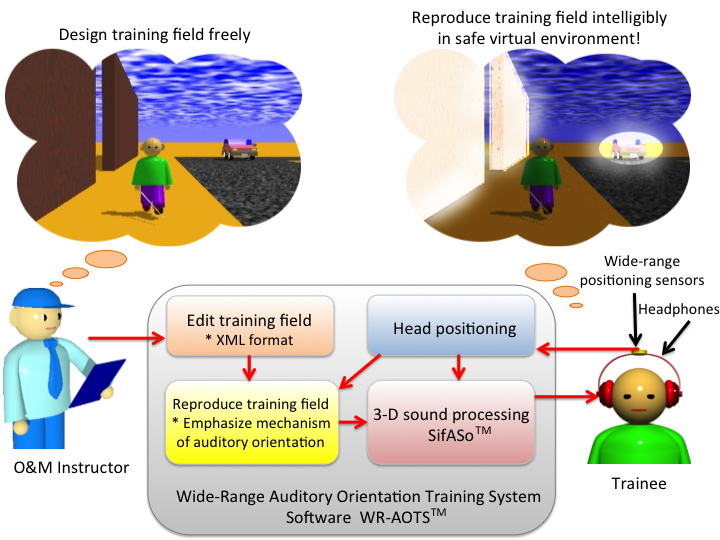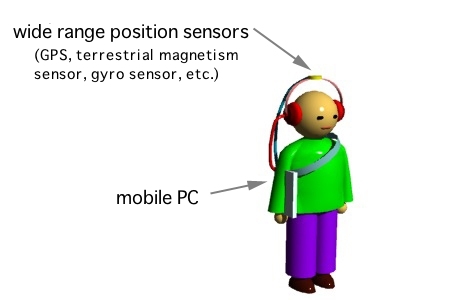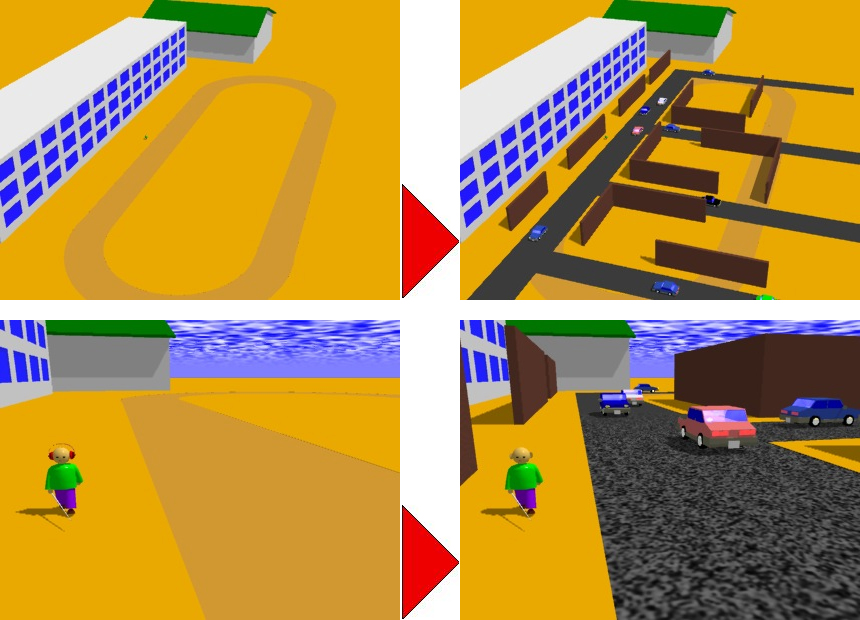Concept
Wide-range Auditory Orientation Training System is developed in order to conduct the auditory orientation training for the O&M training of the blind people in safe virtual environment, and has the following features:
- Acoustic training field for O&M can be presented through headphones by 3-D sound technology.
- Training of both sound localization and obstacle perception can be performed by reproducing sound reflection and insulation.
- System can be installed to all-purpose personal computer, and does not need special signal processor chip. Almost all the signal processing can be performed by software. The cost of system can be reduced.
- The O&M instructor can edit the training field freely. The elements such as
Sound (e.g. car)
,Wall
can be arranged in the training field. Training fields are described in XML. - Training can be performed without any limitation of movement range of the trainee or sound reproduction field by using wide-range positioning technologies. The trainee can rotate head and walk freely in the training field.

* WR-AOTS™ contains SifASo™ technologies developed by Tohoku University and Tohoku Fukushi University.
History of study
Auditory Orientation Training System Ver. 1.0 (2003-2005)
Basically, what is the Auditory Orientation Training System? Please read the page of Auditory Orientation Training System Ver. 1.0 first.
Wide-Range Auditory Orientation Training System (2006-)
Our first system (2005) could not be introduced to the education/rehabilitation facilities, because of the following three problems:
- High cost (about 5 millions Yens = about 40-50 thousands US dollars).
- Range limitation of both trainee movement and reproduced sound field.
- Too much large to carry.
In order to solve these problems, the members of WR-AOTS™ Project conducted the following two improvements:
- Implementing our technologies to low-cost mobile PC as a software, without using expensive special devices.
- Using wide-range, low-cost, and low-accuracy position sensors such as GPS, MEMS acceleration, and Gyro sensor, without using narrow-range, high-cost, and high-accuracy sensors.
As results, we could solve these problems. We started to provide Beta version from September 2010, and Release version from March 2013 to the blind facilities.

When the development completed, the low-cost system that can produce wide virtual training field can be introduced to the education/rehabilitation facilities. This system can change the school ground to the virtual field that is wide enough to walk actually.

About Release version, please see the following AIST press release.

 National Institute of Advanced Industrial Science and Technology (AIST), Japan
National Institute of Advanced Industrial Science and Technology (AIST), Japan